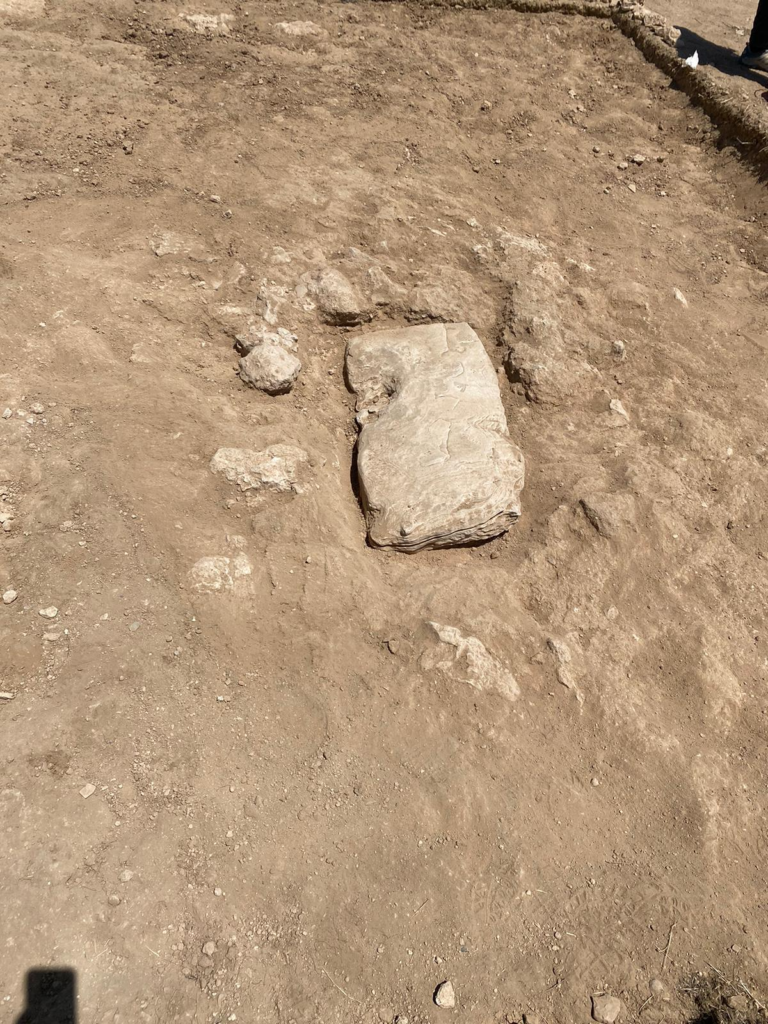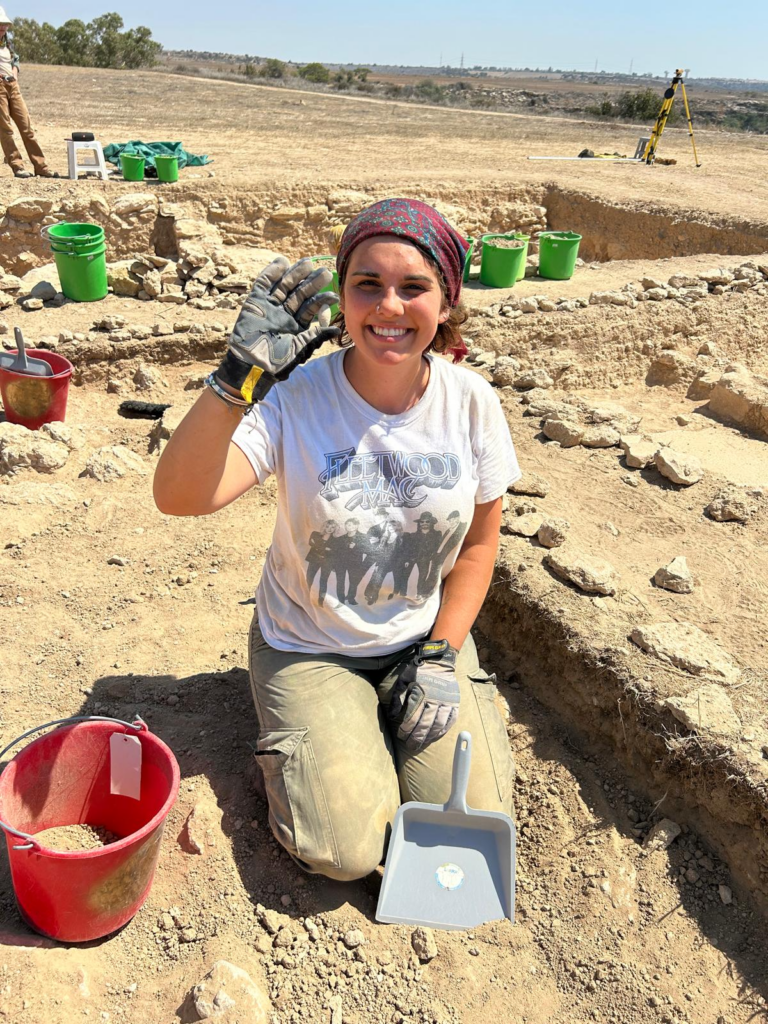Ella Arnold

This week, my co-supervisor Paris Cook and I began excavation on the trench EU 30 under the supervision of Dr. Brandon Olson. The level of responsibility of supervising an entire five meter by five meter trench is new–and honestly, quite daunting–for me; not only are we doing the physical work of excavation, but we are handling all of the notes, paperwork, elevation measurements, Munsell testing, and decision making in the trench. Though it is scary to take on a new level of authority within the project, getting the opportunity to learn the new skills involved with supervising an excavation unit has been beyond valuable and exciting.

As far as progress goes for our trench, we are still in the early stages of excavation. After the 5×5 square for our trench was mapped out, we began raking back the grass, brush, and other “alien” material on the topsoil. At this stage, we were able to open our first stratigraphic unit, take pictures, and fully record our noticings and material collections. Next, we began the process of breaking up the topsoil and removing it to reveal the plow zone, where farming plows left deep, compact ridges of soil on the earth. Around this part of the process, we began to turn up large chunks of mudbrick, which indicated a large presence of stones or a wall. We also found a slab of “plastery gypsum” surrounded almost in full by large stones, making us ponder the reason for the stone’s placement– a practical purpose, or ritual significance? What ultimately informed our decision to end the SU and begin a new one, beyond the gypsum slab, was a stretch of stones running east to west along the far north end of the trench. Here, we decided to sweep the entire unit, take closing GPS points and elevations, and photograph the unit before closing our first SU (SU 10101) and opening SU 10102 in order to explore the possibility of the wall and get closer to answers about the gypsum slab.

SU 10102 is the unit that we are currently working in. We have been continuing breaking up the mudbrick in the plough zone and articulating around the rocks that may be a wall. We have uncovered more intermittent rocks around the trench, as well as a disjointedness between the “wall” rocks, so we are still left with many unanswered questions. Furthermore, we have reached a level where we are beginning to find items like iron spearheads, pieces of slag, cut stone, and larger sherds of pottery. However, the most exciting find of the dig for me so far happened today, when I was sweeping the trench today and found a sling bullet. After Dr. Olson and Tom gave the bullet a closer look, they found that it was inscribed with large letters that appear to have been placed backwards in the mold. The bullet reads “ΑΙΣΧΙ,” but written backwards. A bullet with an inscription of these letters has yet to be found at Vigla, so the next step is to research comparanda and to see if there are names or inscriptions to match the bullet.
Our next steps are to finish sweeping out the unit, articulating the rocks, taking closing pictures, and doing photogrammetry before opening SU 10103. We are planning to lift the gypsum slab before digging deeper through the mudbrick to see if we can answer our questions about it, and I am looking forward to uncovering more of the mysteries that lie beneath the dirt in our crazy trench.
